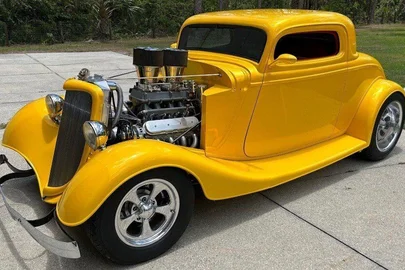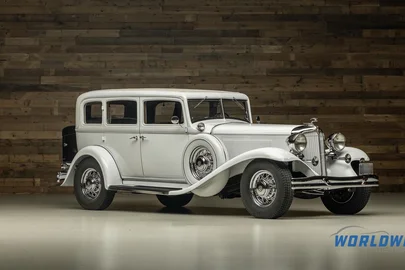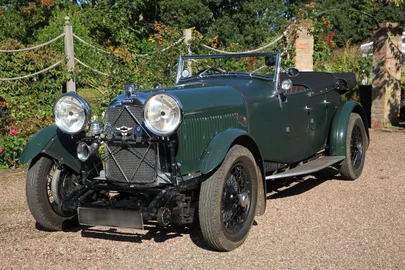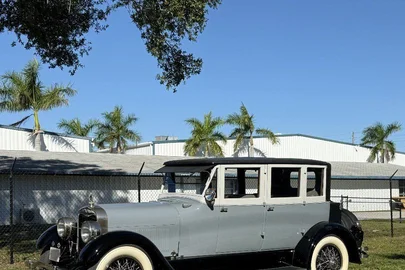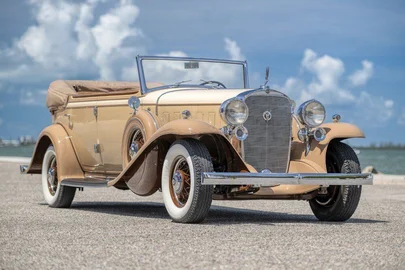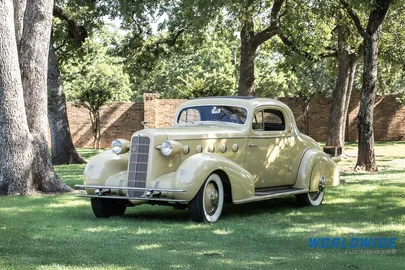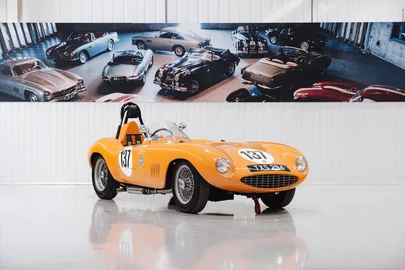
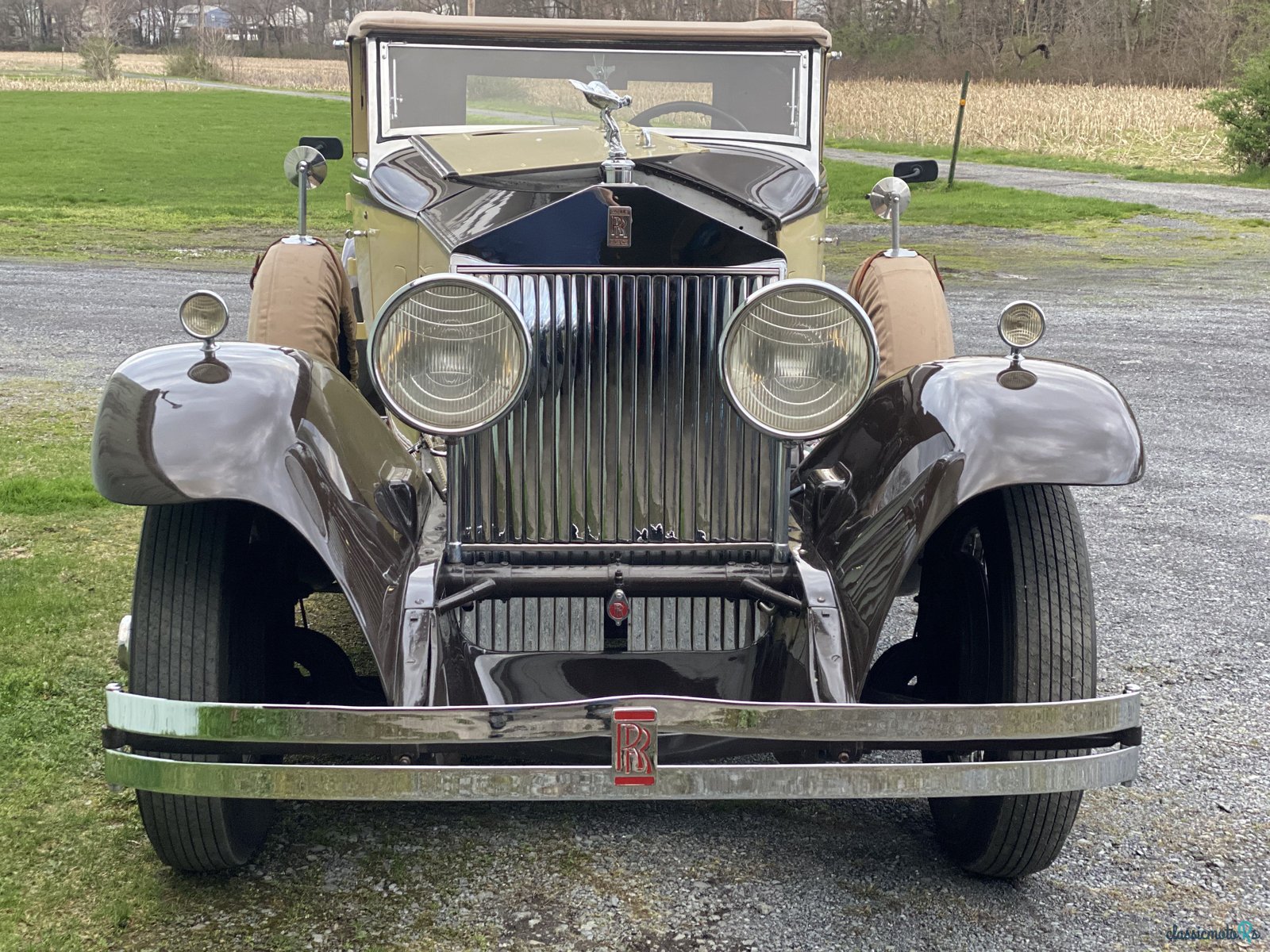

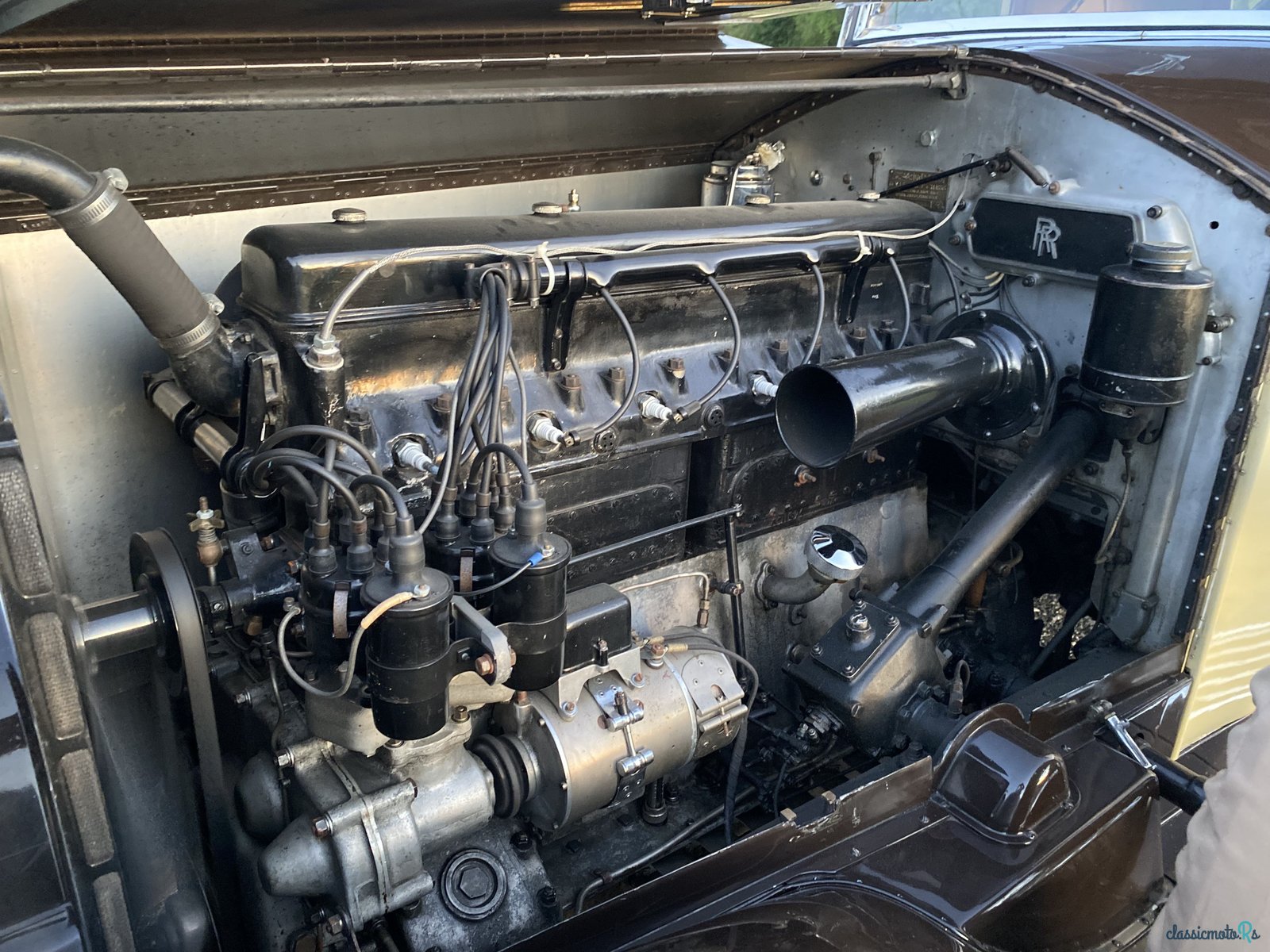

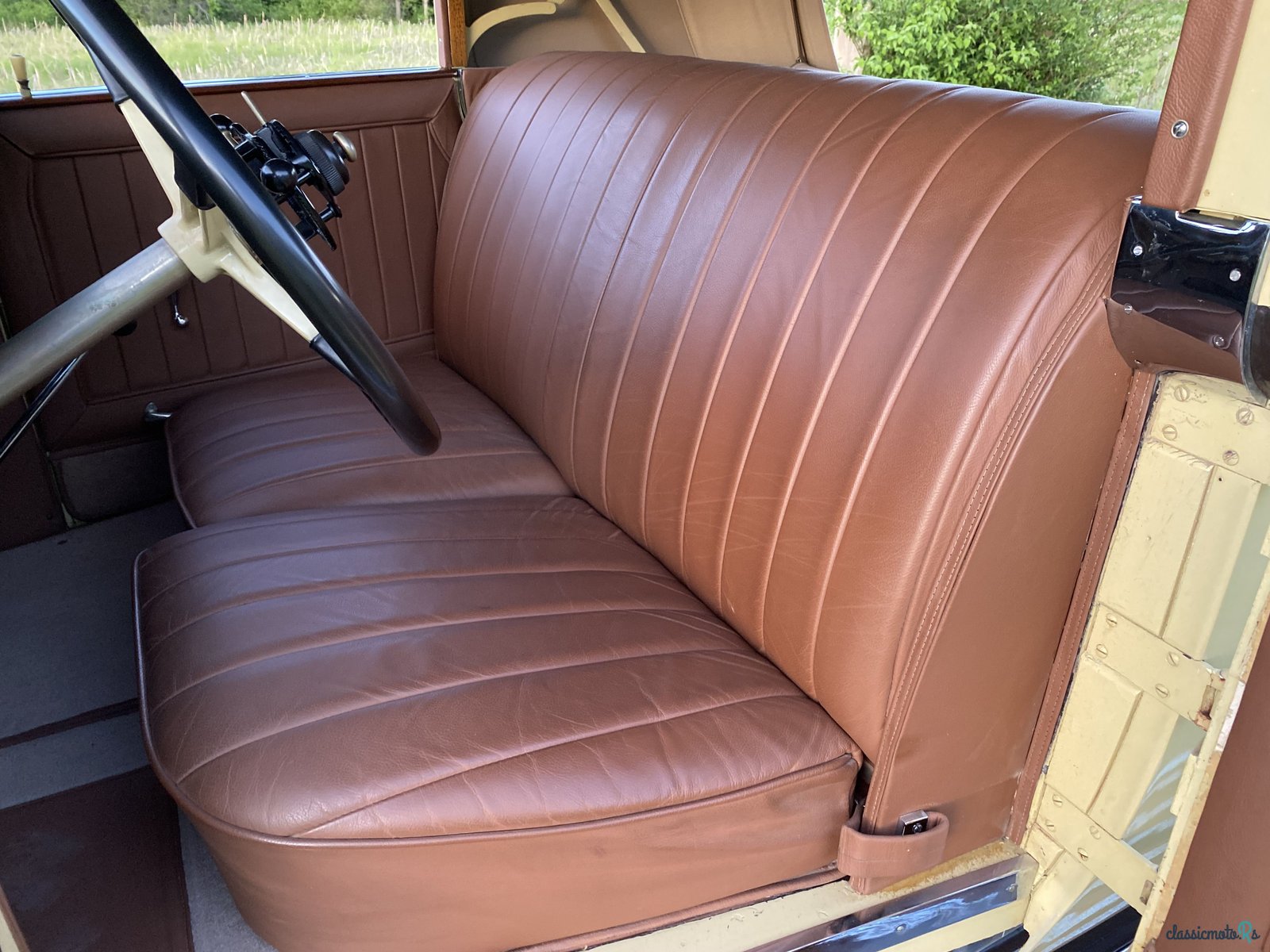
6 photos
1929' Rolls-Royce Phantom I
Report This Ad!Rate This!Bookmark This
NegotiablePublished 23 July 2022ID: gD027u
Expired
3 years, 5 months ago
3 years, 5 months ago
Information from the owner
Age: 93 years
Exterior color: Green
Seller's comments about 1929' Rolls-Royce Phantom I
One of the most elegant of Brewster’s offerings, the Regent provides open air motoring, with the luxury of roll up windows for inclement weather. Only 22 Regents were produced, with 21 fitted onto Springfield Phantom I chassis. From the exterior, the Regent is immediately recognizable by its distinct rear door built into its sleek lines for access to the rumble seat. This specific Regent body was designed to hug the body, giving this automobile an underslung look. This specific body was built down around the frame rail, resulting in a narrower splash apron, which gives the car an overall sportier look.
S112FR was originally delivered on May 8th of 1929, to C. H. Webber of New York, fitted with a Brewster Warwick body. Four years later, S112FR’s was refitted with this Brewster Regent body, which it has now retained for 89 years. The switch was done under the ownership of well known broadcaster, Alfred McCosker, before being sold to new owners in New York.
In 1955, S112FR was purchased by Dr. George Marks of Winchester, Massachusetts. Then in July of 1968 S112FR was advertised in the Flying Lady on page 1090. The description read “new bearings, cylinder head, exhaust system”, with a new top and repainted Brewster Green. “Included are four stainless steel wire wheels” which it is now riding on. S112FR next appeared under the ownership of Ralph Lehtola of Bridgewater Massachusetts and The Lester Tire Company, before later being purchased by David Woloch of Akron, Ohio.
Under his ownership, a restoration was started, all brightwork was removed and stripped. The body was repainted, and top and upholstery were all redone. Unfortunately, S112SR would then sit unfinished for several decades in heated storage.
It wasn’t until 2010, that this PI was purchased by its current Prewar Rolls collector owner and removed from its slumber. It was estimated that the car hadn’t been run in 10 years, and S112FR was transported immediately to a Pennsylvania prewar Rolls-Royce specialist.
Upon its arrival in Pennsylvania, a cylinder leak down test was preformed, and then all fluids were drained. Next, the radiator, bonnet, fan, torque reaction dampers, front engine mounts and under trays were removed. The timing cover was removed, sump dropped and the removal of the slipper fly wheel and idler gear. Gear bearings were replaced, and then the main and connecting rod bearings were inspected. The slipper fly wheel was dismantled and cleaned, which is documented with photographs. The Autovac was carefully removed, inspected and prepped for plating, as was the windshield trim.
New landau irons were cast in bronze, the originals were said to have been lost many decades ago. The carburetor was taken apart, low and high speed jets inspected as well all internals inspected and reassembled. Next all of the main bearings and connecting rod bearing nuts were pinned. The slipper flywheel was assembled and poundage was set. The oil pump was taken apart, with oil pipes for the bearings inspected and repaired where necessary. Next, re-assembly took place and the test running of the engine began.
The battery box was removed, and due to 81 years of corrosion, a replacement was fabricated out of stainless steel. Following this, the electrical system was completely rewired, including disassembly of the junction box, and all of the conduit that runs the entire length of the chassis. All of the headlight, tail light, and reverse light switches were removed, cleaned and reassembled. New conduit and wires were run, with a new master switch, and connected to the fuse panel with the correct whipping at the wire ends. At this time, an electric fuel gauge calibrated to the tank was installed and hidden in the driver’s side glove box. A voltage / polarity convertor as well as a 12-volt outlet was installed for the touring, also hidden. Next a Hotronics battery disconnect switch was installed, as well as a switch for turn signals.
Lastly the radiator shell was removed, and prepared for the instillation of the shudders and the cars caloristat. The caloristat now functions wonderfully, and all in the all, the mechanical restoration took approximately 909 hours prior to road testing. The bejuir system was repaired, a plug for the battery maintainer added, as well as some paint touch up was performed.
S112FR now runs and drives brilliantly, and with the Gear Vendors overdrive can handle highway speeds with ease. Since restoration, it has remained in a prewar Rolls collection and has completed many tours. This is a tour ready Springfield Phantom I with a proven track record!
S112FR was originally delivered on May 8th of 1929, to C. H. Webber of New York, fitted with a Brewster Warwick body. Four years later, S112FR’s was refitted with this Brewster Regent body, which it has now retained for 89 years. The switch was done under the ownership of well known broadcaster, Alfred McCosker, before being sold to new owners in New York.
In 1955, S112FR was purchased by Dr. George Marks of Winchester, Massachusetts. Then in July of 1968 S112FR was advertised in the Flying Lady on page 1090. The description read “new bearings, cylinder head, exhaust system”, with a new top and repainted Brewster Green. “Included are four stainless steel wire wheels” which it is now riding on. S112FR next appeared under the ownership of Ralph Lehtola of Bridgewater Massachusetts and The Lester Tire Company, before later being purchased by David Woloch of Akron, Ohio.
Under his ownership, a restoration was started, all brightwork was removed and stripped. The body was repainted, and top and upholstery were all redone. Unfortunately, S112SR would then sit unfinished for several decades in heated storage.
It wasn’t until 2010, that this PI was purchased by its current Prewar Rolls collector owner and removed from its slumber. It was estimated that the car hadn’t been run in 10 years, and S112FR was transported immediately to a Pennsylvania prewar Rolls-Royce specialist.
Upon its arrival in Pennsylvania, a cylinder leak down test was preformed, and then all fluids were drained. Next, the radiator, bonnet, fan, torque reaction dampers, front engine mounts and under trays were removed. The timing cover was removed, sump dropped and the removal of the slipper fly wheel and idler gear. Gear bearings were replaced, and then the main and connecting rod bearings were inspected. The slipper fly wheel was dismantled and cleaned, which is documented with photographs. The Autovac was carefully removed, inspected and prepped for plating, as was the windshield trim.
New landau irons were cast in bronze, the originals were said to have been lost many decades ago. The carburetor was taken apart, low and high speed jets inspected as well all internals inspected and reassembled. Next all of the main bearings and connecting rod bearing nuts were pinned. The slipper flywheel was assembled and poundage was set. The oil pump was taken apart, with oil pipes for the bearings inspected and repaired where necessary. Next, re-assembly took place and the test running of the engine began.
The battery box was removed, and due to 81 years of corrosion, a replacement was fabricated out of stainless steel. Following this, the electrical system was completely rewired, including disassembly of the junction box, and all of the conduit that runs the entire length of the chassis. All of the headlight, tail light, and reverse light switches were removed, cleaned and reassembled. New conduit and wires were run, with a new master switch, and connected to the fuse panel with the correct whipping at the wire ends. At this time, an electric fuel gauge calibrated to the tank was installed and hidden in the driver’s side glove box. A voltage / polarity convertor as well as a 12-volt outlet was installed for the touring, also hidden. Next a Hotronics battery disconnect switch was installed, as well as a switch for turn signals.
Lastly the radiator shell was removed, and prepared for the instillation of the shudders and the cars caloristat. The caloristat now functions wonderfully, and all in the all, the mechanical restoration took approximately 909 hours prior to road testing. The bejuir system was repaired, a plug for the battery maintainer added, as well as some paint touch up was performed.
S112FR now runs and drives brilliantly, and with the Gear Vendors overdrive can handle highway speeds with ease. Since restoration, it has remained in a prewar Rolls collection and has completed many tours. This is a tour ready Springfield Phantom I with a proven track record!
